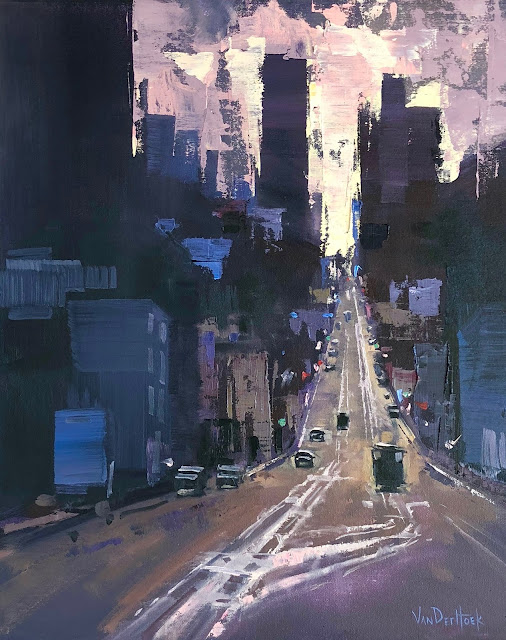Living on the Edge - Why Edge Work is an Important Component in Creating Successful Painting
 |
| "7th Street Reflection" oil on 16" x 20" panel. |
 |
| Detail |
With all these questions running through your mind you begin to carefully fill in the empty space barely allowing one color to touch it's neighboring color. Then you evaluate and adjust and continue questioning your decisions.
You can get so caught up in this process that it's easy to completely forget about edges. As a result, the painting looks labored over, lacking life, a focal point, expression and joy (yeah, I know I said joy which sounds all warm and fuzzy, but it's true).
What should you do at this point? Well, if you're happy with how it looks then leave it alone, it is your painting after all. For myself, I'm never entirely happy with my paintings and this unhappiness I've since learned is a wonderful part of the painting process that helps spur me into action.
 |
| Detail |
I like to flip my canvas upside down at this point, walk a few feet away and evaluate the edge relationships before I continue working.
Clouds, reflections, distant mountains and anything in the distance, can all benefit from soft or broken edges. If you're feeling really daring, see how far you can take it and break up most of the edges, you might be surprised at how much you can get away with and how much life has returned to your painting simply because you manipulated the edges.
Now go, paint on the edge!


Comments